Imaging Resource Camera of the Year 2018: Best Premium Compact, Superzoom, Intermediate & Entry-Level
posted Thursday, December 20, 2018 at 2:58 PM EDT
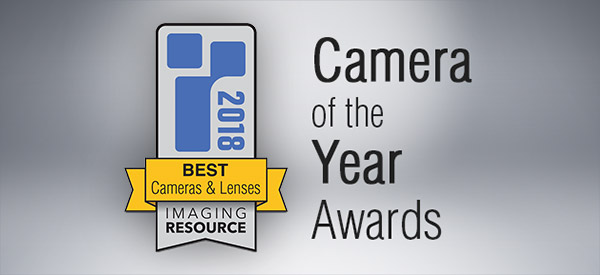
Premium compact cameras have been in existence for a long time, but their popularity just seems to live on even in the days of smartphones. And what's not to love? If a camera is relatively small yet still has a decent-sized sensor (and with these we're talking much larger than your smartphone's tiny sensor) you can have your cake and eat it too! We have several Premium Compacts deserving of your attention in this year's awards and feel confident in their abilities across the board.
And, of course, we also love to honor cameras in the Intermediate and Entry-level categories, as these play important roles for many reasons. The most obvious of course is giving entry-level photographers a good starting point after exhausting the severe limitations of their smartphone, and the other is giving enthusiast photographers a capable (yet not-so-expensive) backup camera for their bag. Our selections this year will not disappoint in either use case, so dive in and find the one that's right for you!
Camera of the Year, Best Premium Compact -
Panasonic LX100 II
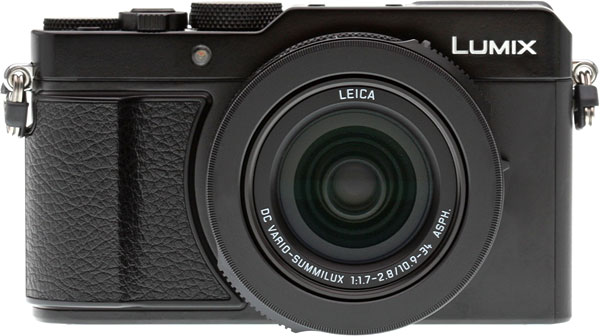
Four years after its predecessor nabbed our award for the year's best premium compact camera, the Panasonic LX100 II once again wows us with its coat pocket or purse-friendly design. Announced this past summer, the LX100 II retains a similar configuration to the earlier model, retaining the LX100's extremely bright f/1.7-2.8 Leica DC Vario-Summilux 3.1x zoom lens. But while externally it seems little-changed, there's big news awaiting on the inside.
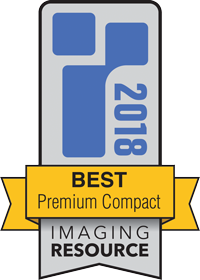
Perhaps most importantly, there's a brand-new image sensor which yields a maximum 16.8-megapixel resolution. That's a significant step up from the 12.7-megapixel maximum of the original LX100, answering one of our few criticisms of the earlier model, and yet the sensitivity range hasn't been curtailed. In fact, image quality has actually taken a noticeable step forward at the higher end of the range: Detail, color and contrast are good to great all the way up to ISO 6400 and remain pretty usable for smaller print sizes even at the maximum of ISO 25,600. And despite the increase in resolution, performance remains very good for its class in most respects, too.
The LX100 II is also a decidedly more modern camera than was the LX100 in other respects. For one thing, it now supports touch-screen control, and sports more user-configurable controls than ever before, including up to five on-screen soft buttons. Its viewfinder can also trade off frame rate for a brighter image, and the LX100 II also supplements its in-camera Wi-Fi with a Bluetooth radio for quicker and easier pairing and sharing with smartphones. And it now allows battery charging in-camera with a standard USB cable and charger.
Yet despite the significant upgrade, Panasonic has managed to keep the list price at just under the magic $1000 point, making the LX100 II a good $100-200 more affordable than flagship premium compacts from rivals like Canon and Sony. No question about it: The Panasonic LX100 II gives you a heck of a lot of camera for your money, and is thoroughly deserving of the title "2018's best premium compact camera."
Buy Now: B&H | Amazon | Adorama
Camera of Distinction, Premium Compact - Sony RX100 VI
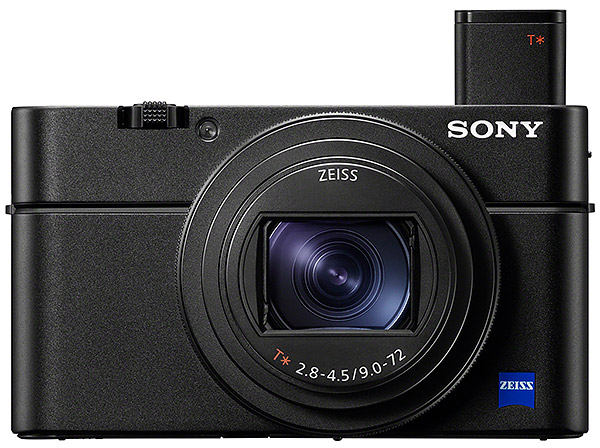
After five straight camera of the year wins running for the RX100-series, the Sony RX100 VI is the first in the line that didn't quite wow us enough to take top honors. But make no mistake, this is still one heck of a camera, with great daytime image quality, incredibly swift performance, a very deep buffer, quality 4K video capture plus 4-40x slow-motion recording, too. And unlike its predecessors, this little beauty somehow manages to shoehorn a 24-200mm equivalent zoom range into a pants pocket-friendly body.
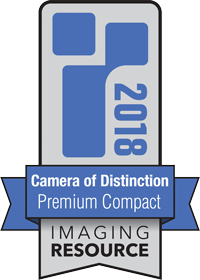
So why didn't the RX100 VI take the grand prize this time around, we hear you asking? Well, that new, far-reaching zoom is something of a mixed blessing. While it's great in the daytime, it can struggle a bit in low light against the brighter lenses of the RX100 III, IV and V. If you want to freeze subject motion, you'll need to ramp the sensitivity up and make do with a noisier image to make up for that difference. Couple this with poor battery life and a steep $1200 price tag, and we just couldn't quite give Sony the nod this time around.
That being said, if you can justify its cost and can live with a less-bright lens to gain significantly more telephoto reach, the Sony RX100 VI is still an amazing camera. There's just nothing else out there which comes close to offering the same heady mixture of pocketability, daytime image quality and performance while offering such a generous zoom range. And for those of you who can't, well... Sony is still selling every one of the RX100 VI's award-winning predecessors, so there's probably another model in the lineup that's perfect for your needs!
Buy Now: B&H | Amazon | Adorama
Camera of the Year, Best Intermediate Camera -
Panasonic GX9
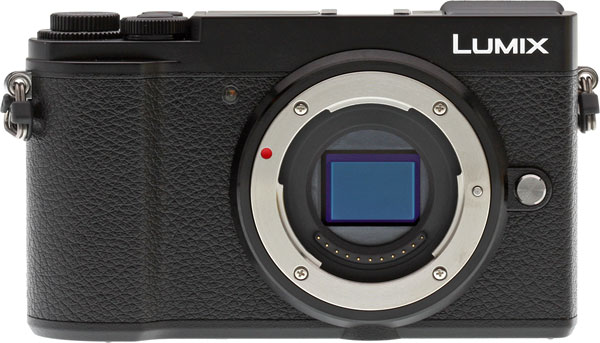
For those photographers wanting to go beyond entry-level, yet still have a small, lightweight camera that doesn't break the bank, the Panasonic GX9 is our favorite choice of 2018. While the naming convention suggests it's the replacement to the higher-end Lumix GX8, the GX9 is more of a GX85 successor. Regardless of that, the GX9 gets a lot of things right: image quality, autofocus, and performance are all impressive. Plus, despite the easy-to-carry design, the GX9 features tons of customizable physical controls, a tilting touchscreen as well as a built-in articulated electronic viewfinder. And all this for camera kit that's priced right at $999 (yes, that's a camera body *and* a zoom lens!).
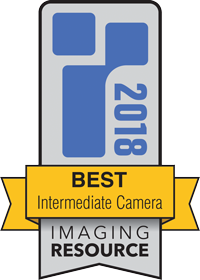
With an updated 20MP sensor and newer image processor, the GX9 offers excellent image quality for a Micro Four Thirds camera, at both low and higher ISOs. True-to-form with Panasonic, the GX9 offers a plethora of nifty in-camera imaging tricks thanks to their 4K Photo technology, such as 30fps burst shooting, focus stacking, as well as an all-new Sequence Composition feature that'll automatically combine the subjects of multiple frames into a single image. When it comes to performance, the GX9 offers fast full-res burst shooting at up to 9fps with deep buffers, making it a nimble camera for fast action shooting. AF-S performance is equally quick and it can also focus in very low light situations.
All in all, the Panasonic GX9 is a solid, all-around intermediate level camera. The compact, lightweight design plus small, light lenses highlight the benefits of the Micro Four Thirds system. Bundled with a versatile 12-60mm zoom lens for under $1000, the Panasonic GX9 is a great kit for the travel photographer or for those who simply want a lot of bang for their buck that also won't weigh them down.
Buy Now: B&H | Amazon | Adorama
Camera of the Year, Best Entry-Level Camera - Nikon D3500

As the big camera manufacturers continue to push the envelope with their professional cameras by introducing new technologies and features, many customers are looking for the best bang for their buck as they start their photographic journey. The entry-level category is a hugely popular market and in recent years, one of the best DSLR deals has been the Nikon D3xxx-series. The newest version continues in this tradition by being a very capable camera and Nikon's most portable DSLR ever. Nikon has also reworked its image sensor while keeping it at a very usable 24 megapixels.
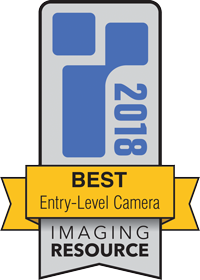
At the time of writing, for around $500, you can purchase a brand-new Nikon D3500 with two kit lenses. Covering much of the focal length range from 18mm to 300mm, this kit is not only very versatile, but also well-suited to beginner photographers thanks to its"Guide Mode." You can learn the ropes and grow alongside the D3500, which is ideal for an entry-level camera. The D3500 is there to help you learn while also continuing to be a good camera when you are ready to branch out into manual shooting modes.
With image quality punching high above its price and user-friendly features and shooting modes, the Nikon D3500 is a very good entry-level camera and the best in its class for 2018.
Buy Now: B&H | Amazon | Adorama
Camera of Distinction, Entry-level Camera - Fujifilm X-T100
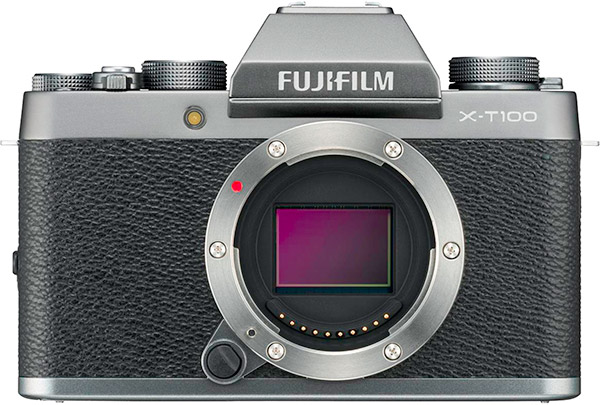
Affordable, lightweight and stylish, the Fuji X-T100 delivers very good image quality from its 24-megapixel APS-C sensor. The X-T100 offers features that many entry-level mirrorless cameras do not, including a built-in electronic viewfinder, tilting touchscreen and 4K video recording. Granted, the 4K UHD video is capped at 15 frames per second, but the X-T100 does Full HD video at a nice 60 fps.
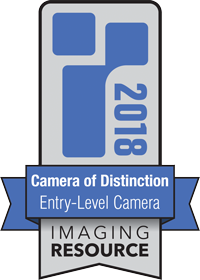
The Fuji X-T100 is both portable and powerful, and yet surprisingly affordable. For photographers wanting to dip their toes into an APS-C mirrorless camera system, you'll be hard-pressed to beat the Fujifilm X Series, and if you want an entry to the X Series of cameras and lenses without breaking the bank, the X-T100 is the most full-featured offering at its price point.
For its very impressive image quality, good all-around performance and wide-ranging set of features, the Fujifilm X-T100 has earned its honor of distinction in this year's class of entry-level cameras.
Buy Now: B&H | Amazon | Adorama
Camera of the Year, Best Superzoom - Nikon P1000
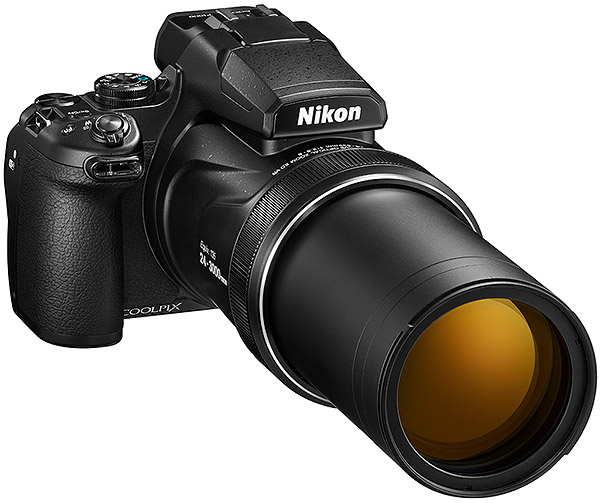
Superzoom cameras are very popular for good reason, as they reel-in the distant world for convenient capture. Whether it be for sports, wildlife scenarios or even pulling in the moon, superzoom cameras can extend far into the distance without need of tripods and save you serious cash whereas larger-sensored rigs can only venture with solid tripods and thousands of dollars. And when it comes to superzoom cameras, none has ever gone nearly as far as the Nikon P1000.

We were surprised by the image quality achieved by the P900 at its full optical zoom of 2000mm-eq., and simply amazed by the P1000's IQ at its 3000mm-eq. optical reach. It's not full-frame quality, of course, but nobody expects it to be. This is a 3000mm-eq. system that costs only $997, which comes to just 33 cents per millimeter! That's the real beauty of the Nikon P1000, in that your capability-per-dollar is just incredible.
And if you're concerned with shooting handheld with such a long lens, we found the Vibration Reduction system on the P1000 to be excellent, allowing handheld shots even at full telephoto. Once again, this came as a fairly big surprise to us. For the price, the P1000 is perhaps the most versatile camera currently on the market.
The Nikon P1000 would be right at home as a beginner superzoom, as it's quite easy to get good results from it right off the bat. But it's also sophisticated enough to please enthusiasts, and would be right at home in the bag alongside a higher-end Nikon rig, with this model filling in where those rigs simply can't reach. The P600 won our Best Superzoom shootout a few years ago for good reason, and the line has only gotten better since.
Buy Now: B&H | Amazon | Adorama
• • •
Imaging Resource Camera of the Year Awards 2018
Best Enthusiast Cameras & Best Cameras for Video
Best Premium Compact, Superzoom, Intermediate & Entry-Level (current page)
Best Overall & Professional Cameras
Best Lenses of the Year (coming soon)